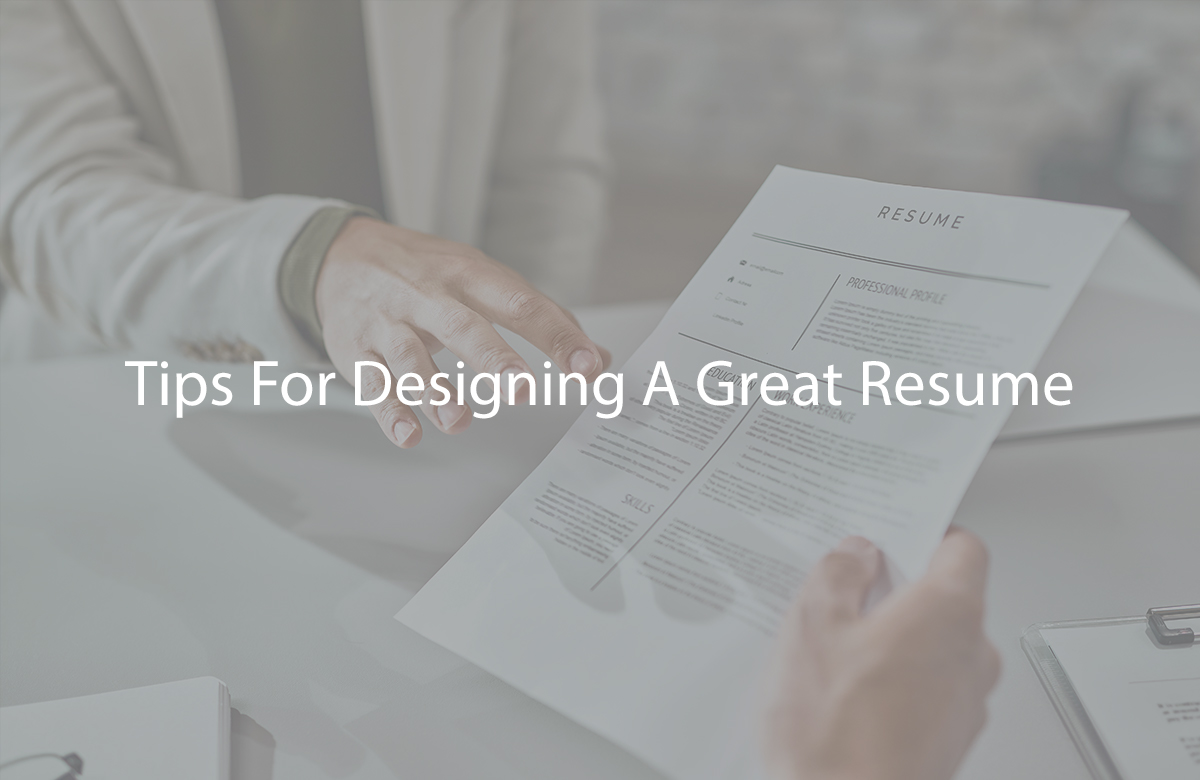
Tips For Designing A Great Resume
Tips For Designing A Great Resume : Designing a great resume involves more than just creating an attractive layout; it’s about crafting a document that effectively communicates your qualifications, skills, and experience. Here are tips for designing a great resume:
Choose a Clean and Professional Layout:
Use a clean, simple, and professional layout. Standard fonts like Arial, Calibri, or Times New Roman are safe choices.
Maintain consistent formatting throughout your resume.
Use a Clear Hierarchy:
Organize your resume with a clear hierarchy. Use bold or larger font sizes for section headings to make them stand out.
Limit Your Resume to Two Pages:
Ideally, keep your resume to one or two pages. Be concise and prioritize the most relevant information.
Create White Space:
Avoid clutter and allow for white space to make your resume more readable and visually appealing.
Use Bullet Points:
Use bullet points to list job responsibilities and achievements. This format is more reader-friendly than dense paragraphs.
Incorporate Color Sparingly:
While a touch of color can enhance your resume’s visual appeal, use it sparingly and professionally. Stick to simple and subdued colors.
Utilize Professional Headings:
Include well-defined headings for each section (e.g., Contact Information, Summary, Work Experience, Education, Skills).
Include a Header:
Create a header section at the top of your resume that contains your name, phone number, and email address. You can also include a LinkedIn URL if applicable.
Choose the Right Paper Size:
If you plan to print your resume, use standard US letter size (8.5″ x 11″) or A4 size paper. Print on high-quality, professional paper.
Highlight Key Information:
Use formatting techniques like bold or italics to emphasize key information, such as job titles, company names, and important achievements.
Consistent Bullets:
Use consistent bullet points or symbols throughout your resume to maintain uniformity.
Use Lines or Borders Sparingly:
Employ lines or borders only when necessary, such as to separate sections or to draw attention to important information.
Visual Separation:
Utilize horizontal lines or spacing to separate different sections, making your resume more organized.
Professional Email Address:
Ensure that your email address is professional. Avoid using quirky or unprofessional addresses.
High-Resolution PDF:
Save your resume as a high-resolution PDF to maintain formatting and ensure compatibility across devices.
Customize for the Job:
Tailor your resume design to match the industry and job you’re applying for while maintaining a professional appearance.
Consider Online Portfolios:
If you have an online portfolio, you can include a link to it for employers to explore your work further.
Test the Formatting:
Open your resume on different devices and software to check for any formatting issues.
Consult Online Templates:
Use professionally designed resume templates that are available online to ensure a clean and attractive design.
Get Feedback:
Share your resume with trusted friends, family, or colleagues for feedback on its design and overall appeal.
Remember that while a well-designed resume can make a positive impression, the content and relevance of your qualifications are even more important. Balance a visually appealing design with clear and concise content to create a resume that truly stands out.
